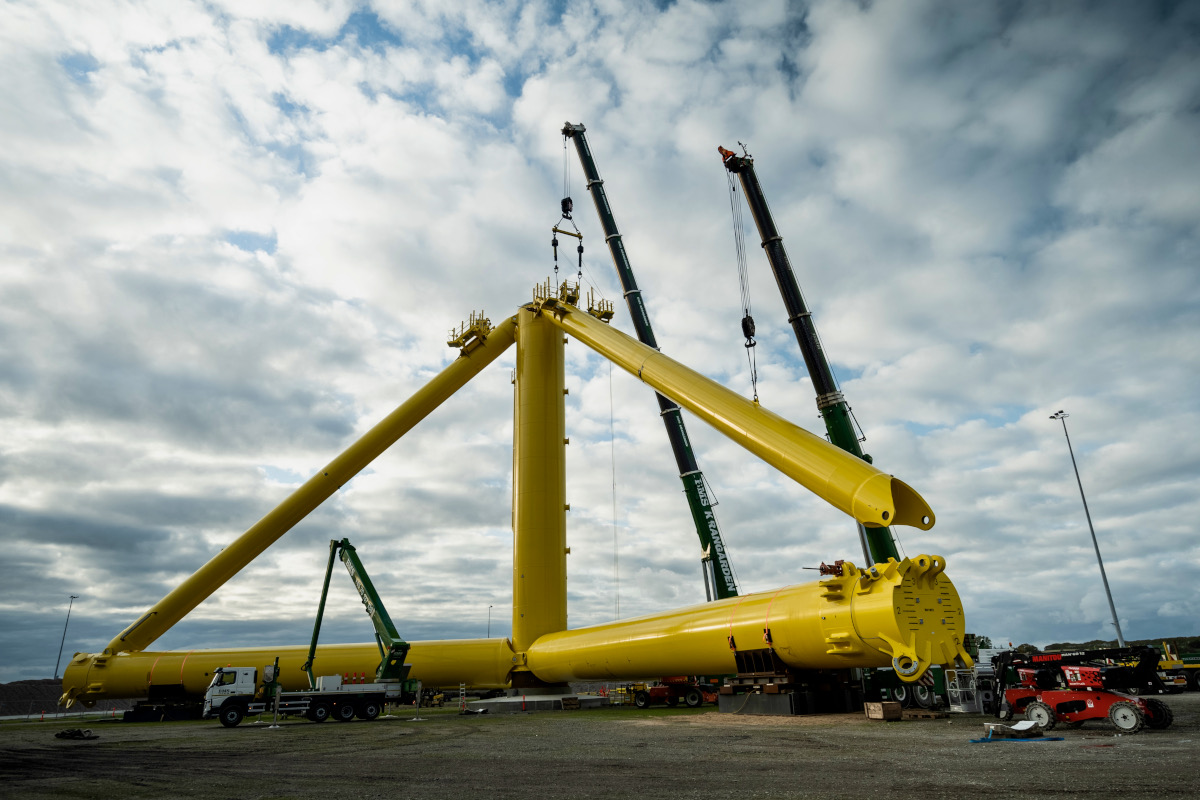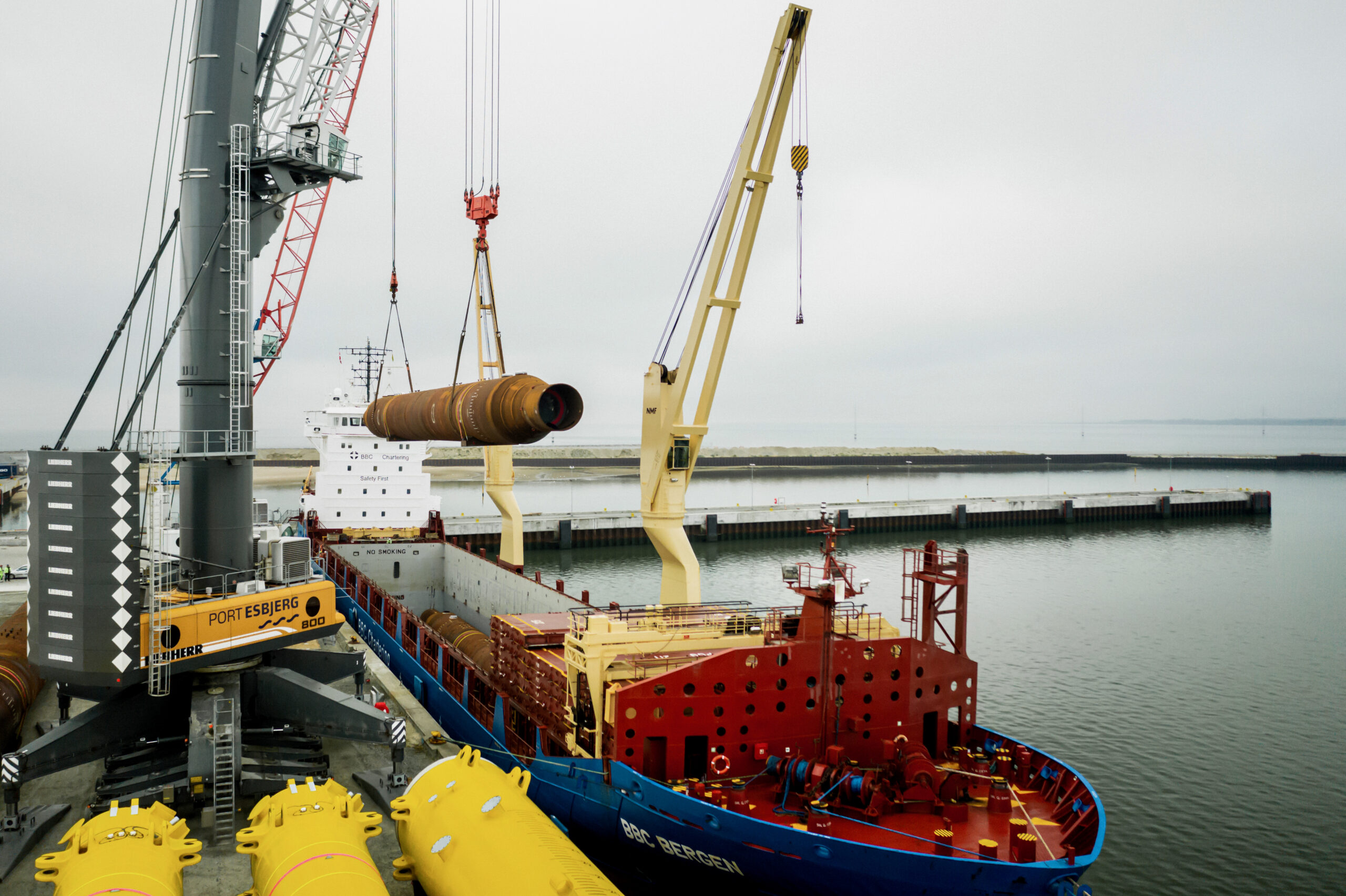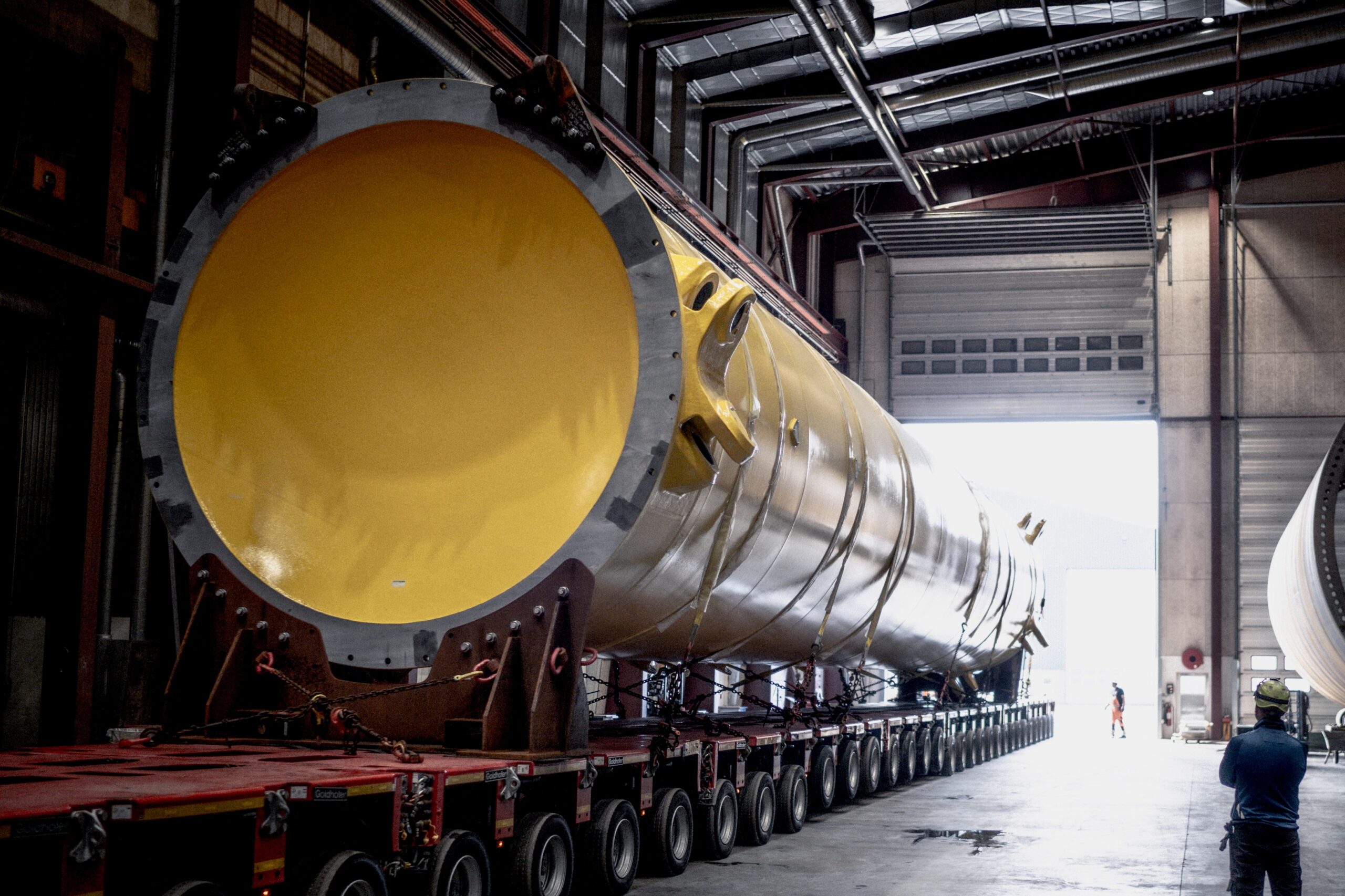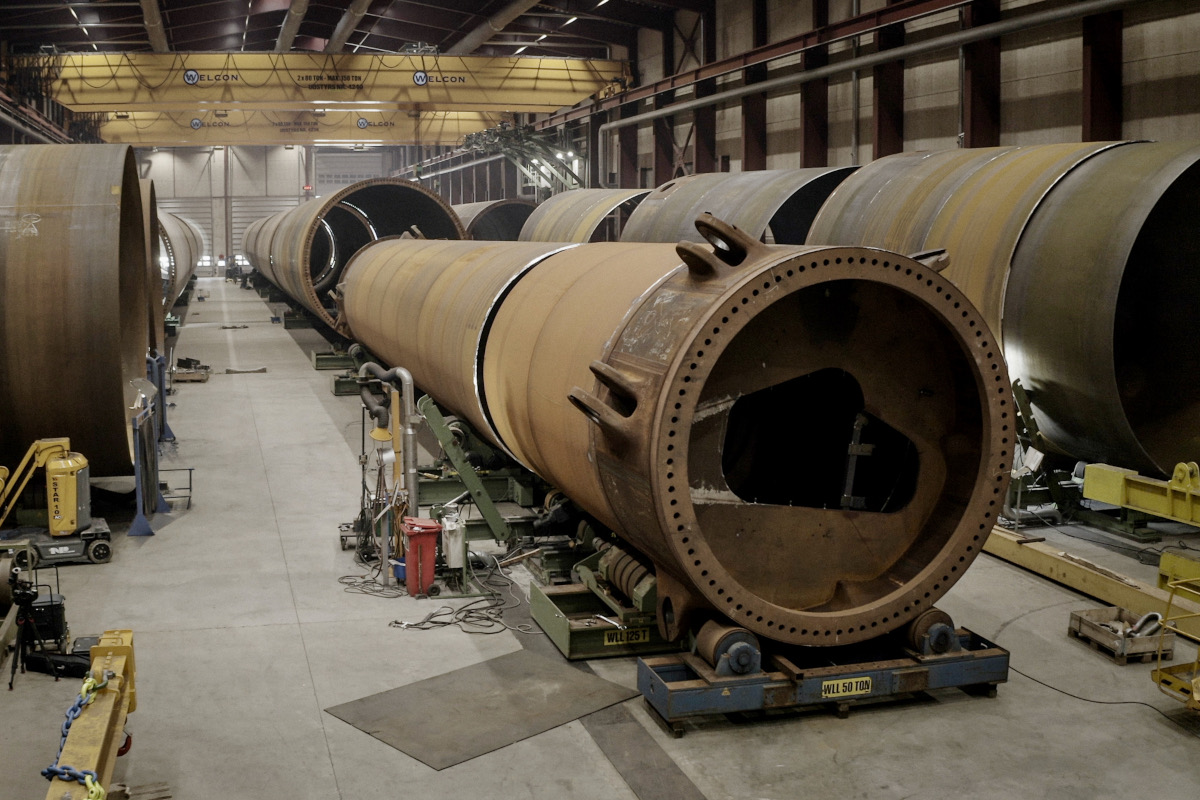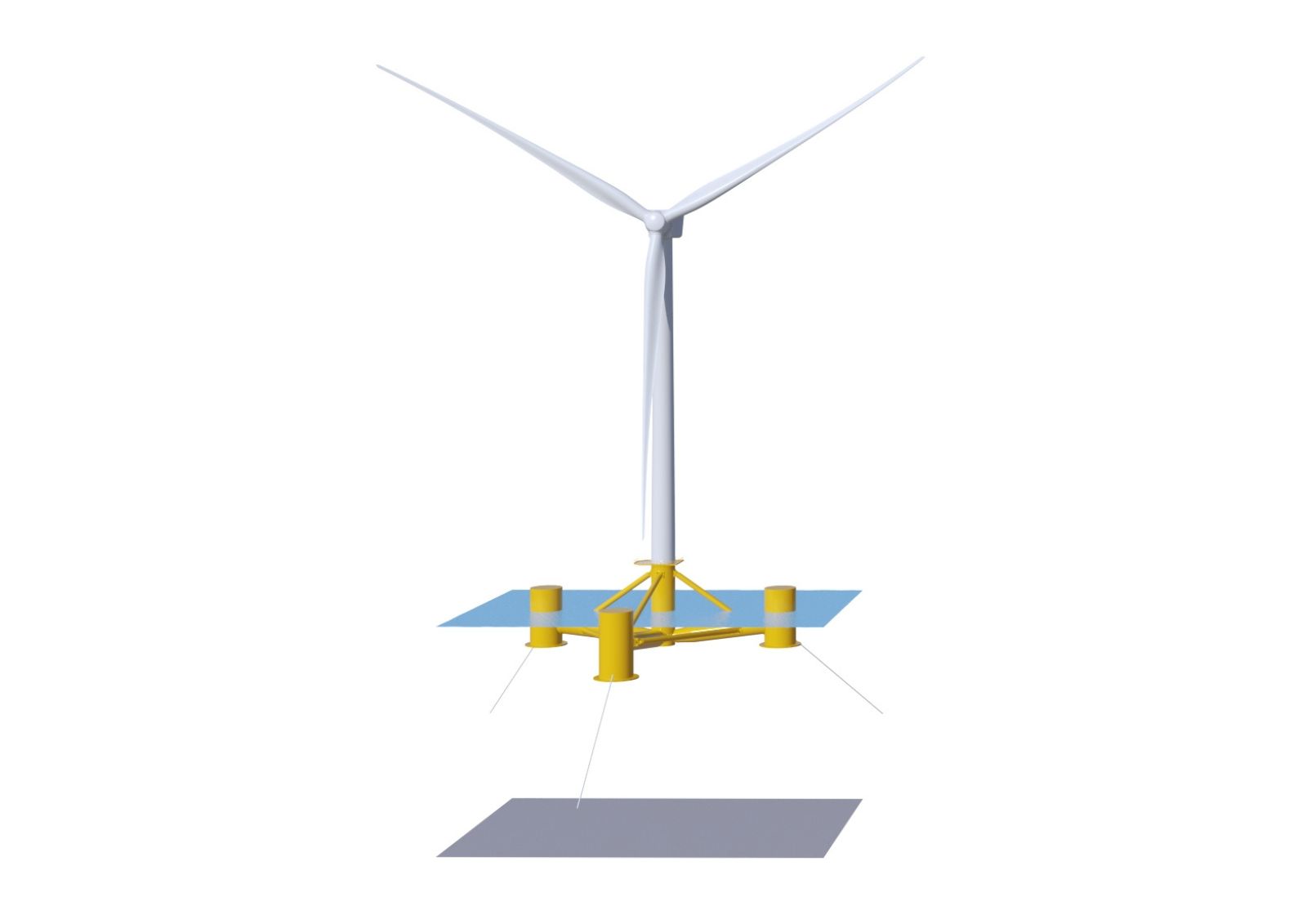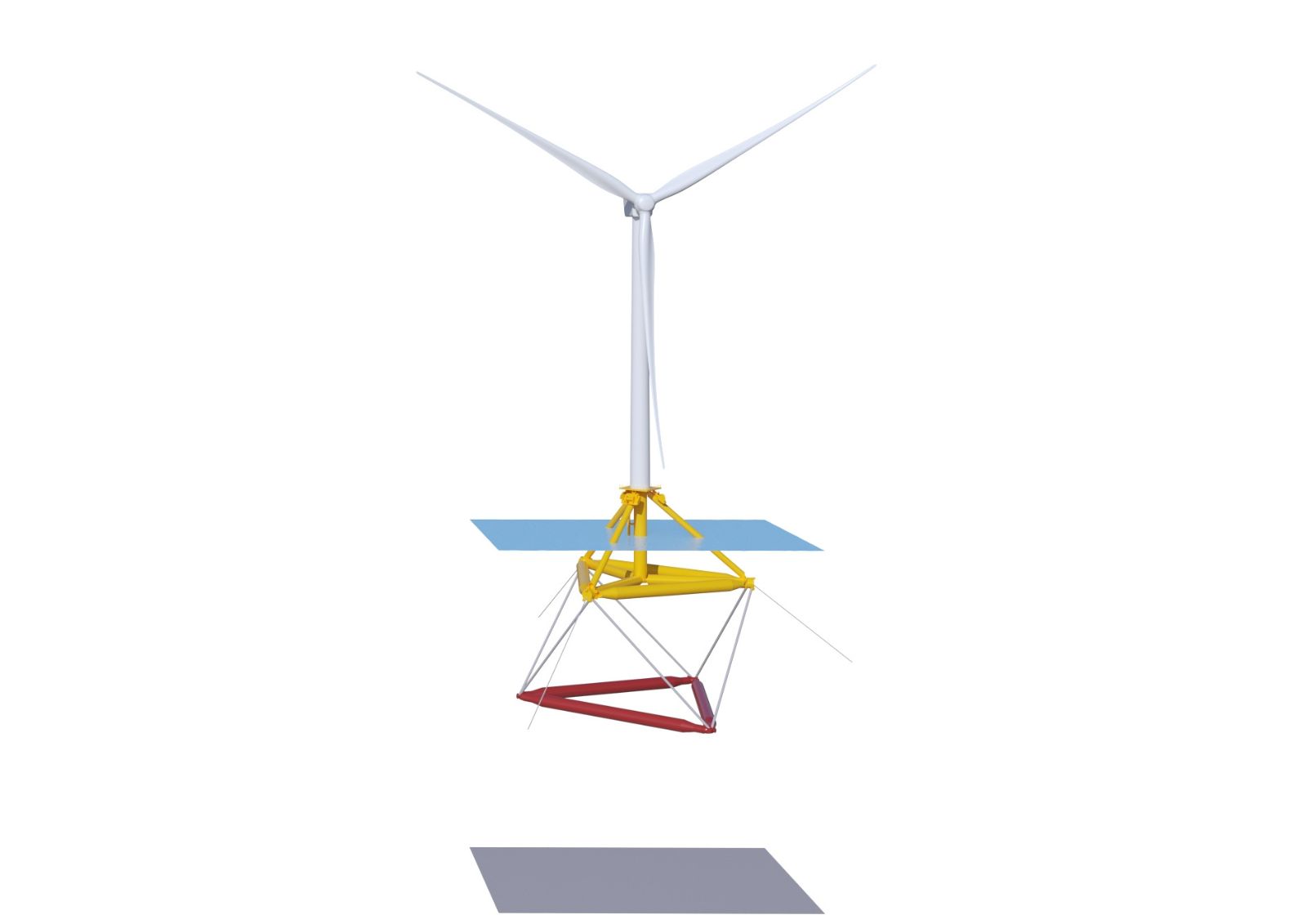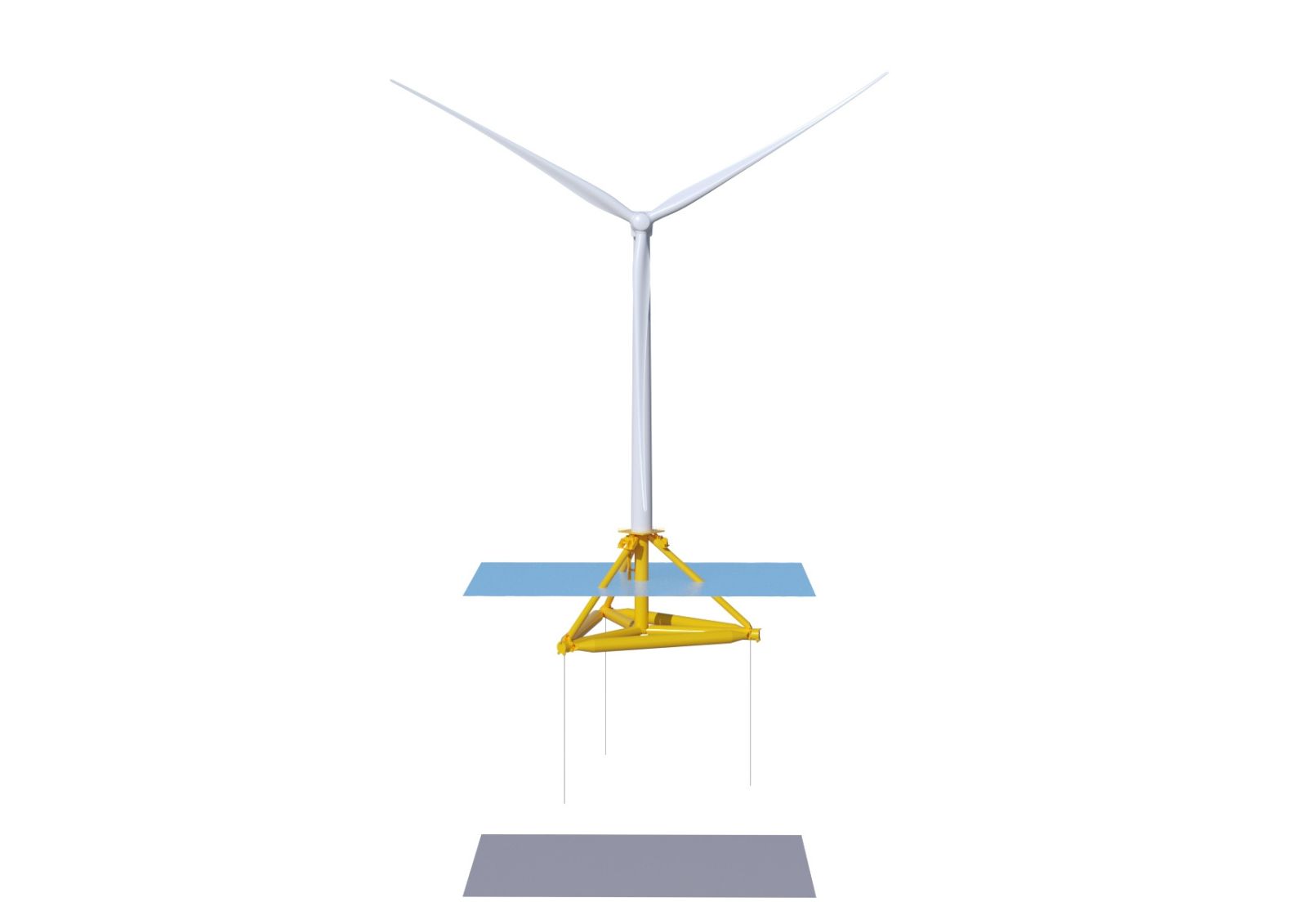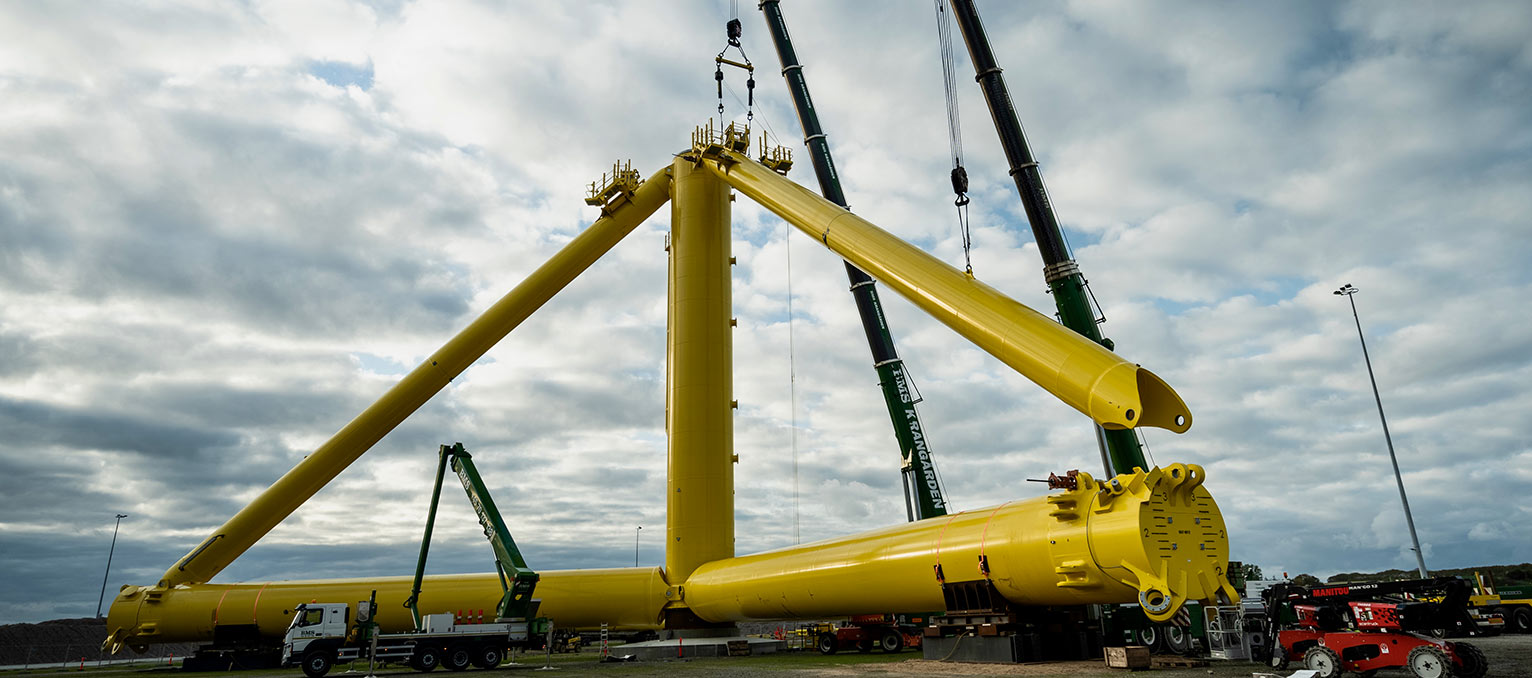
Stiesdal Offshore is bringing offshore wind to the next level with the modular, industrially manufactured Tetra foundation concept
The Tetra concept can be implemented in a range of floating variants and even in a bottom-fixed variant. It offers competitive advantages over existing foundation concepts, with leaner manufacturing, faster installation, and lower material costs.
The concept can be adapted to any turbine size and any water depth.
The world’s first fully industrialized offshore wind foundation
The key to the industrialized approach is factory manufacturing of components followed by port assembly. The Tetra foundation concept is based on factorymade modules joined with maintenancefree joints to form a complete foundation. Fast and robust assembly takes place in the port of embarkation and requirements are limited to a flat area at quayside.
- Easy launch using slip or semisubmersible barge
- Turbine installation in port using land-based crane
- Pre-commissioning in port possible
- Easy towing to site using widely available offshore work vessels
The approach is radically different from shipbuilding and offshore oil and gas technologies and closely resembles the approach of the wind industry. Consequently, the Tetra concept benefits from all the learnings of the offshore wind industry.
The configurations of the Tetra concept
The TetraSub, high demand design
Until 2030 it is expected that the largest part of the floating offshore market will be at relatively shallow water, with depths in the range of 50-200 meter. Thus, the market is expected to evolve initially as an extension of the bottom-fixed market, applying floating technologies to stretch offshore wind’s feasibility beyond the typical bottom-fixed maximum depth of 50-60 meter.
The TetraSub is the variant of the Tetra concept best suited for the 50-200 meter depth range.
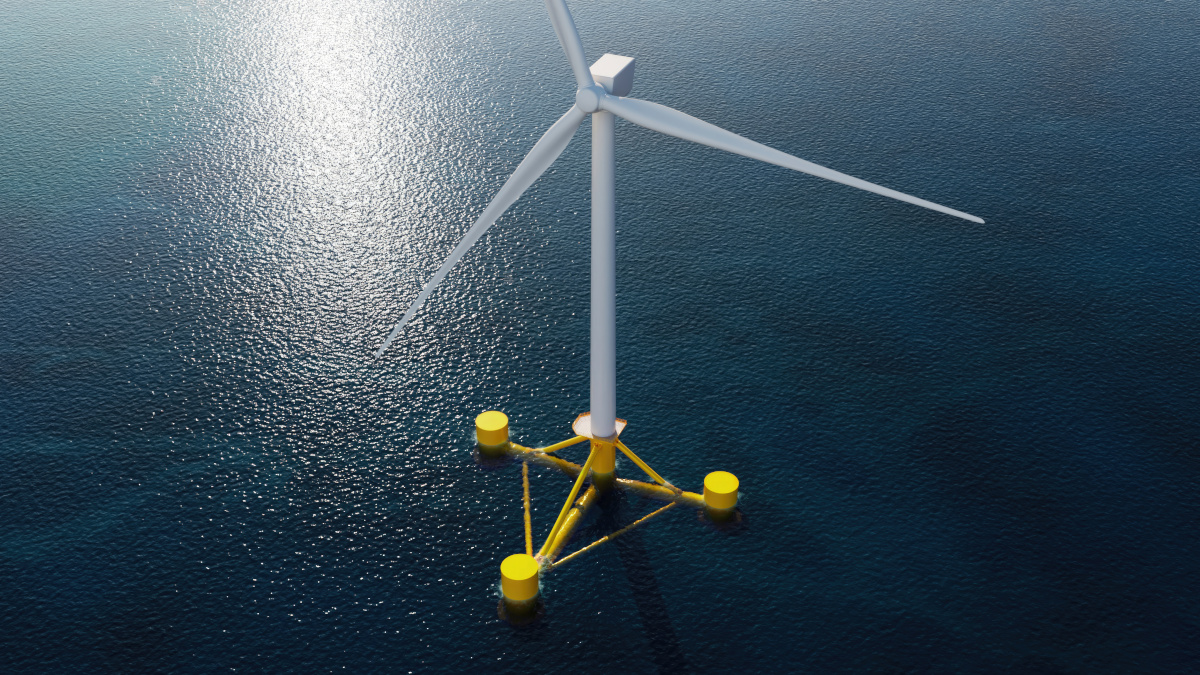
Wind turbine size development
Historically, the rating of offshore wind turbines has been growing exponentially, with a doubling time of 10 years. The growth is continuing unabated these years, and by 2025, the mainstream turbine size is likely to be 15 MW rating with 250 m rotor.
In a “Business as Usual” scenario, by 2030 the mainstream turbine size will have grown to 20 MW rating with 275 m rotor.
The Tetra concept can be scaled to 20 MW rating without any difficulties.
-
Supply chain
The defining feature of the Tetra foundation concept is the modular, “building block” arrangement and the industrialized manufacturing.
The main component of the Tetra concept is the foundation itself, a tetrahedral structure assembled from 4-5 types of modular, tubular steel braces. Some modules are specific to a given configuration, others can be shared over a range of configurations, turbine sizes and site conditions.
All modules are factory-made using automated processes. Even though they differ in specific details, the modular, tubular steel braces and tanks are similar to tubular steel tower sections for wind turbines, and they are easily manufactured by experienced tower suppliers. Consequently, the Tetra concept benefits from an existing, highly efficient, and highly competitive supply chain that has experience from the manufacturing of tens of thousands of tower sections.
Stiesdal has selected Welcon as a preferred supplier of modules for the Tetra foundations. Welcon is the world’s leading supplier of offshore wind turbine towers, and its automated production lines are ideally suited for the manufacturing of the tubular braces and tanks for the Tetra concept.
For markets that cannot be served with modules from Welcon’s main facilities in Denmark or its partnering facilities in the USA and Taiwan Stiesdal can provide support to the establishment of local manufacturing.
-
Delivery
The foundation modules are delivered to the project’s local construction port by land or sea transport.
It is a design target of the Tetra concept that no module should be heavier or have larger diameter than the heaviest and largest part of the turbine tower, and that no module should be longer than the wind turbine blade. The result of this design target is straightforward – if it is possible to get the turbine to the port of embarkation, then it is also possible to get the foundation there without having to resort to on-site manufacturing.
-
Assembly
Once delivered to the port, the structures are assembled at quayside using a proprietary, maintenancefree assembly technology. The assembly in general includes no special processes (welding, painting, etc.), and the infrastructure required for assembly is limited to a flat, open area at the quayside. No dry docks or other special facilities are needed. The harbor depth requirement is 8-10 m.
Following assembly, the foundation is launched using a semisubmersible barge, and the turbine is installed using one or more standard, landbased cranes. The foundation may be temporarily ballasted to sit on the seabed at the quayside, establishing truly “onshore” installation conditions.
-
Deployment
Deployment to the project site is carried out using ordinary tugs or suitable service vessels, such as anchor handlers. Following hookup to preinstalled anchors or tethers or setdown on three prelaid stone pads the turbine will be ready for final cable connection and start of operation.
